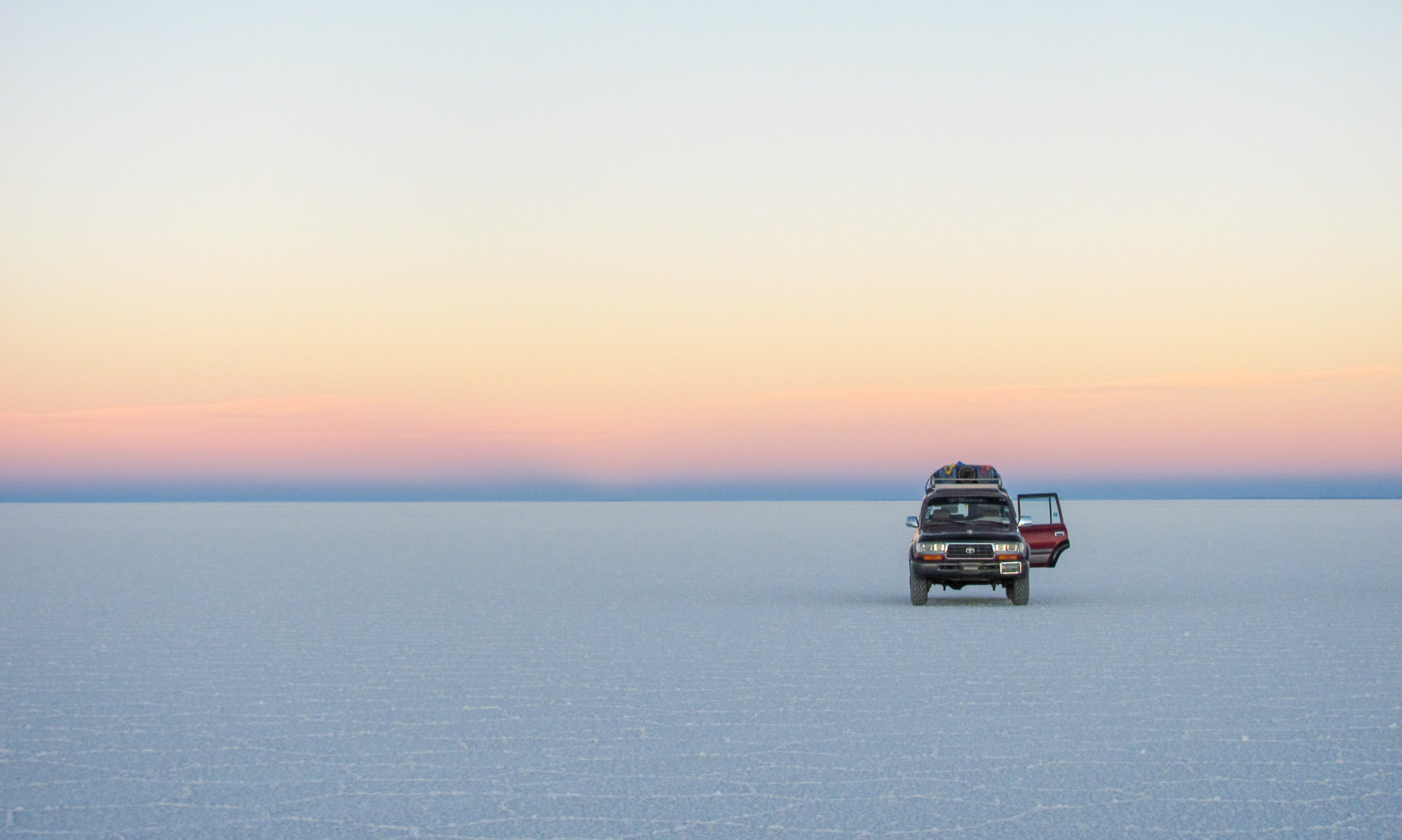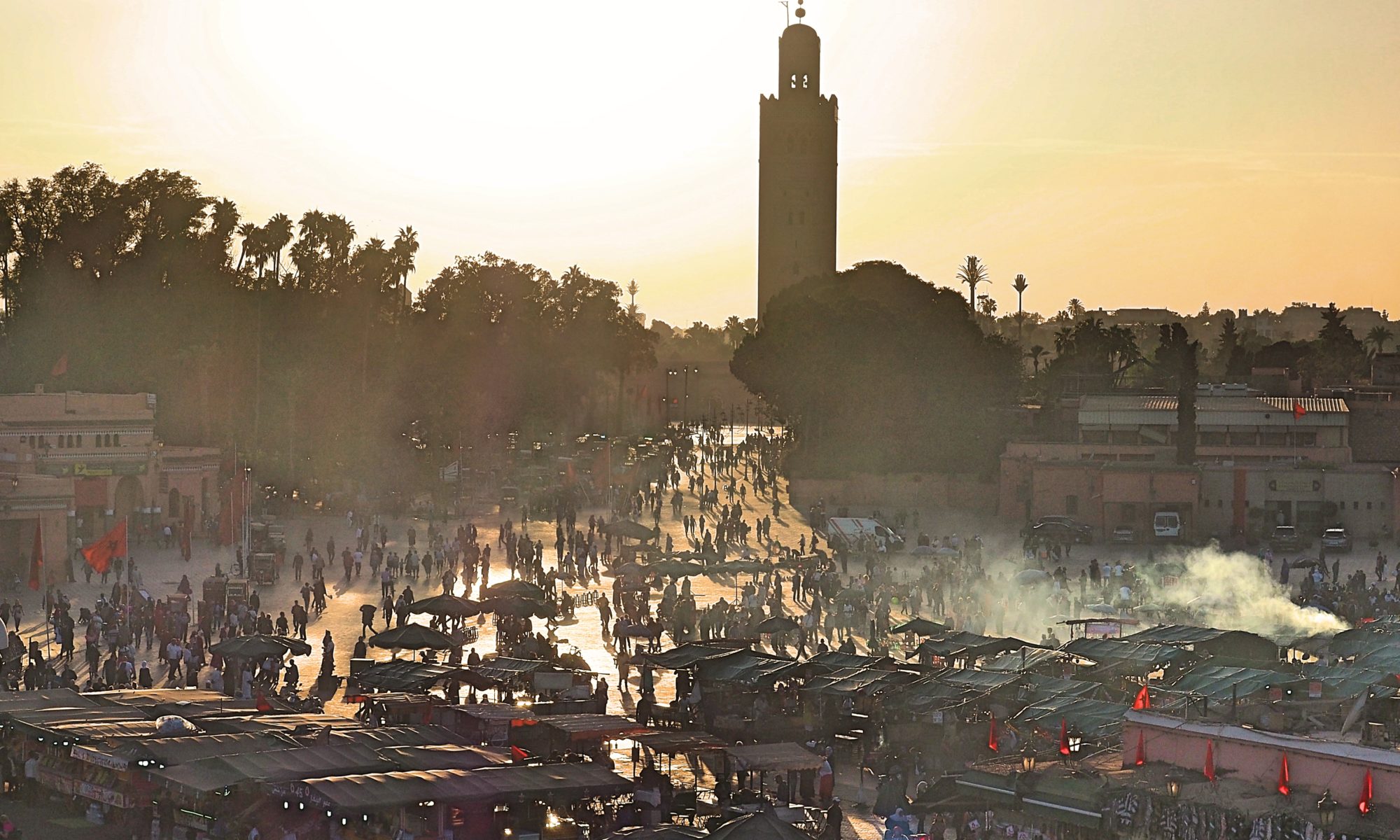If you are going to Marrakech brace yourself, as you are about to be punched in the face by your senses. Walking around the old Medina of Morocco’s most visited city means continuously being overwhelmed by sounds, colors, and smells. At times beautiful, vibrant and delicious and a second later loud, ugly and pungent. It’s an intense experience but if you mix discovering the small streets filled with bartering merchants and beautiful architecture with winding down with a mint-tea in one of its many green oases, Marrakech will charm you like you’ve never been charmed before.
Go straight to what to do in Marrakech
Go straight to restaurants & accommodation
– Practical Information –
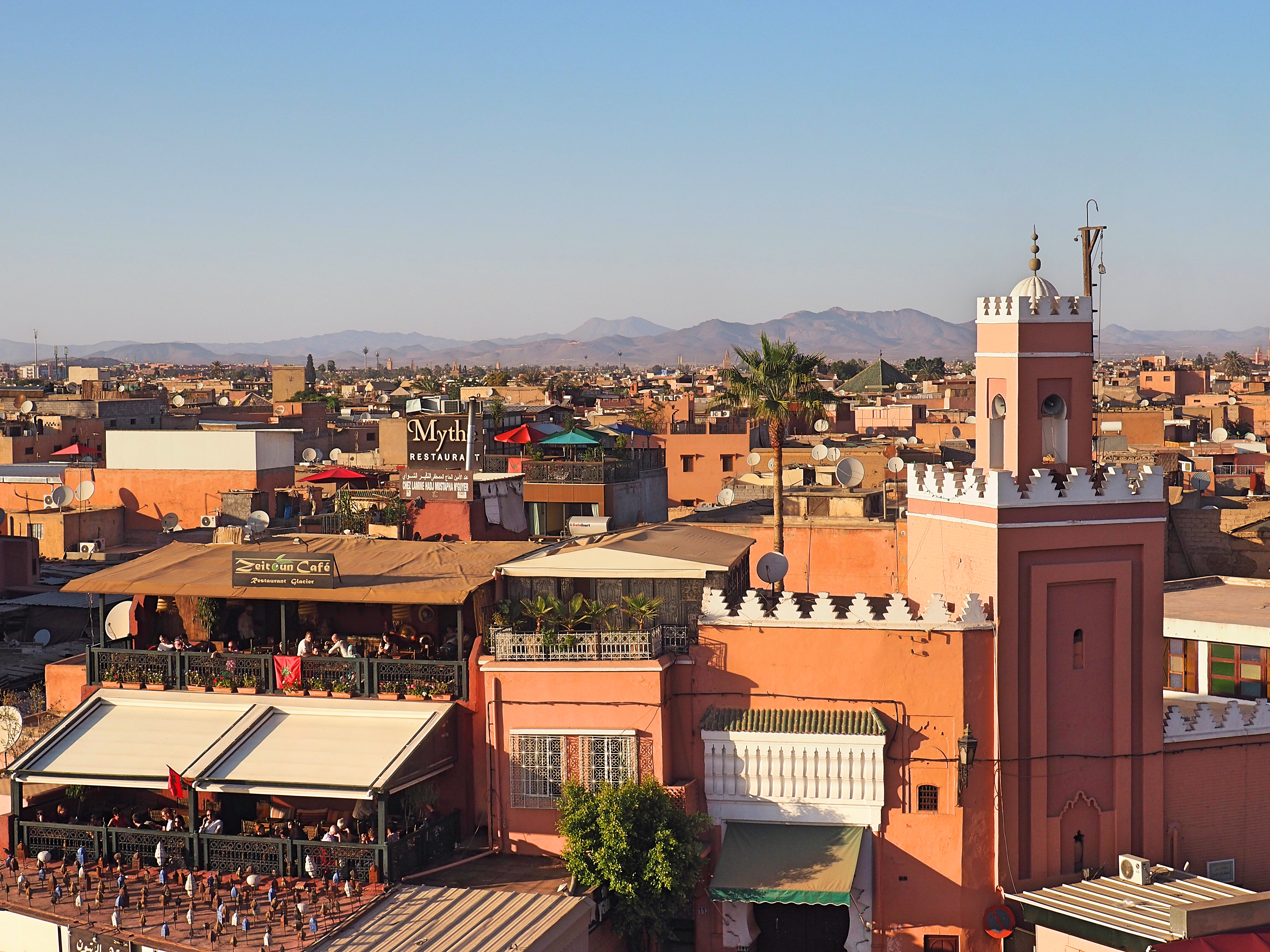
When to go: Marrakech is best visited in late September to late November, when temperatures are pleasantly mild and most days are filled with sun. Equally good is spring (March-May). Avoid the gruesome heat of the summer sun in June – August.
In & Out: Marrakech Menara Airport serves both domestic and international flights, although if you are coming from far it might be cheaper to book a flight to Casablanca and travel by train from there. The easiest and cheapest way to get to the medina is by taking Bus 19 (right in front of the arrival hall) which takes you to Djemaa El-Fna for 20 MAD (30 MAD return-trip). A taxi straight to your hotel will probably set you back anywhere between 100-300 MAD, depending on your haggling skills. The ride is 10KM.
Onland-travelers are best served by using the railway-network as the train is both comfortable and cheap. The railway station is located about 5KM from the Old Medina. Taking a small taxi will cost you about 30-40 MAD. The cheapest option is to take the bus. You have to ask around a little to find the bus stop as it does not stop directly in front of the railway station but once found you can take any of line 3, 8, 14 as they all stop at Djemaa El-Fna. A ticket will set you back 4 MAD. Railway-tickets to Casablanca are 100 MAD.
Lastly you Marrakech has a bus station for long-haul rides. The CTM-station is about 15 minutes by foot from the railway station. If you are not carrying around an offline-map on your phone (which you should!) it is best to just take a small taxi straight to the station. Take into account that the bus station does not offer many facilities, and is not the best place to be late at night. Do not plan on staying there for too long before your bus leaves.
Budget: Marrakech is relatively cheap. Fresh Orange Juice can be found in street-stalls for as little as 4 MAD. Expect to pay 15 MAD for a coffee or a soft-drink and about 50-80 MAD for a meal in a mid-level restaurant. Alcohol is hard to come by and expensive. Beers go from 50 MAD and wines are usually only sold by the bottle. Cheap dorm-beds can be found from 60MAD and double in a budget Riad 400 MAD. It is worth paying a bit more for a room as Riads in the price-range of 600-1000 MAD are usually stunning.
– What to visit in the City –
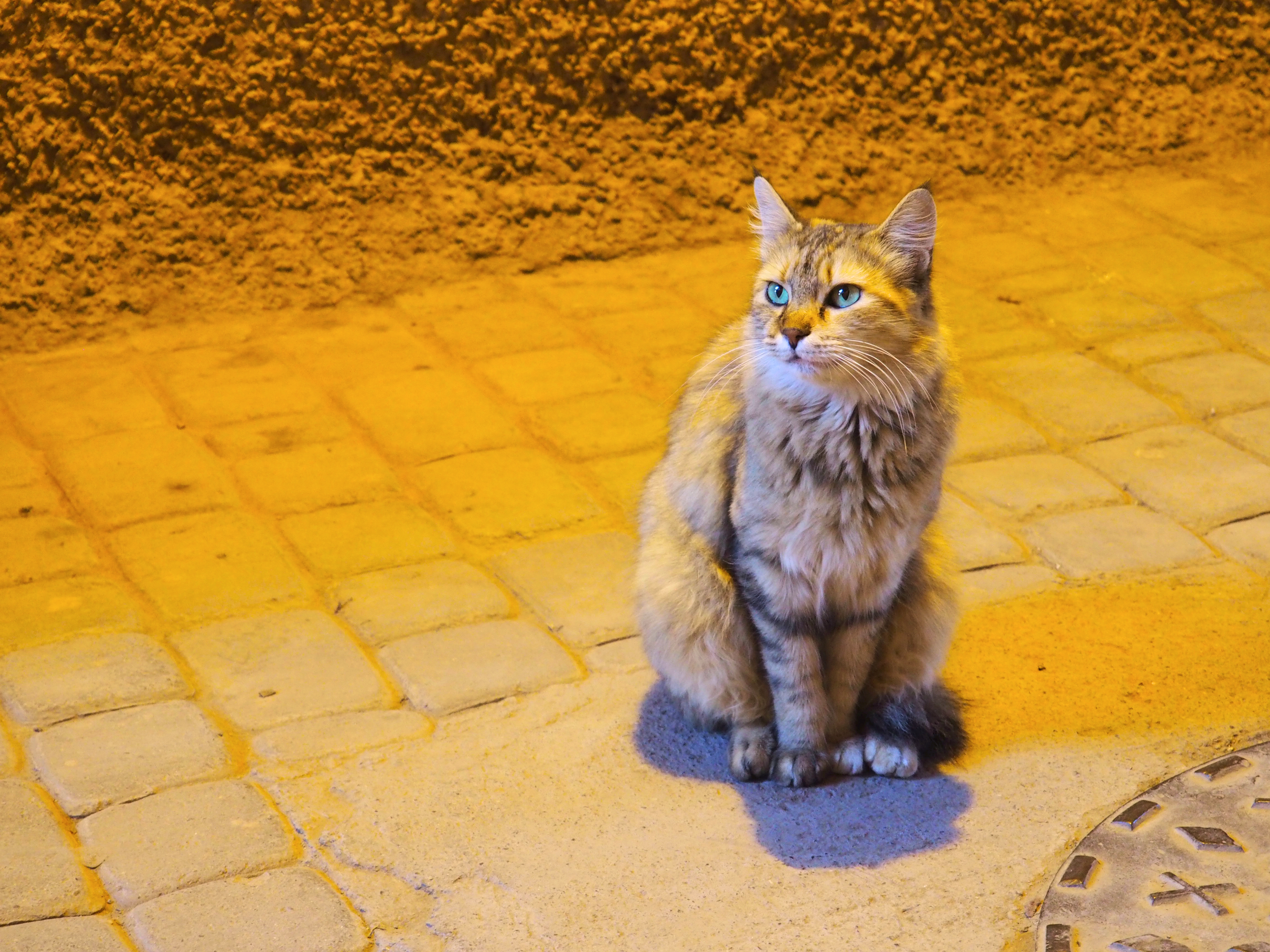
Old City v.s. New city (Ville Nouvelle)
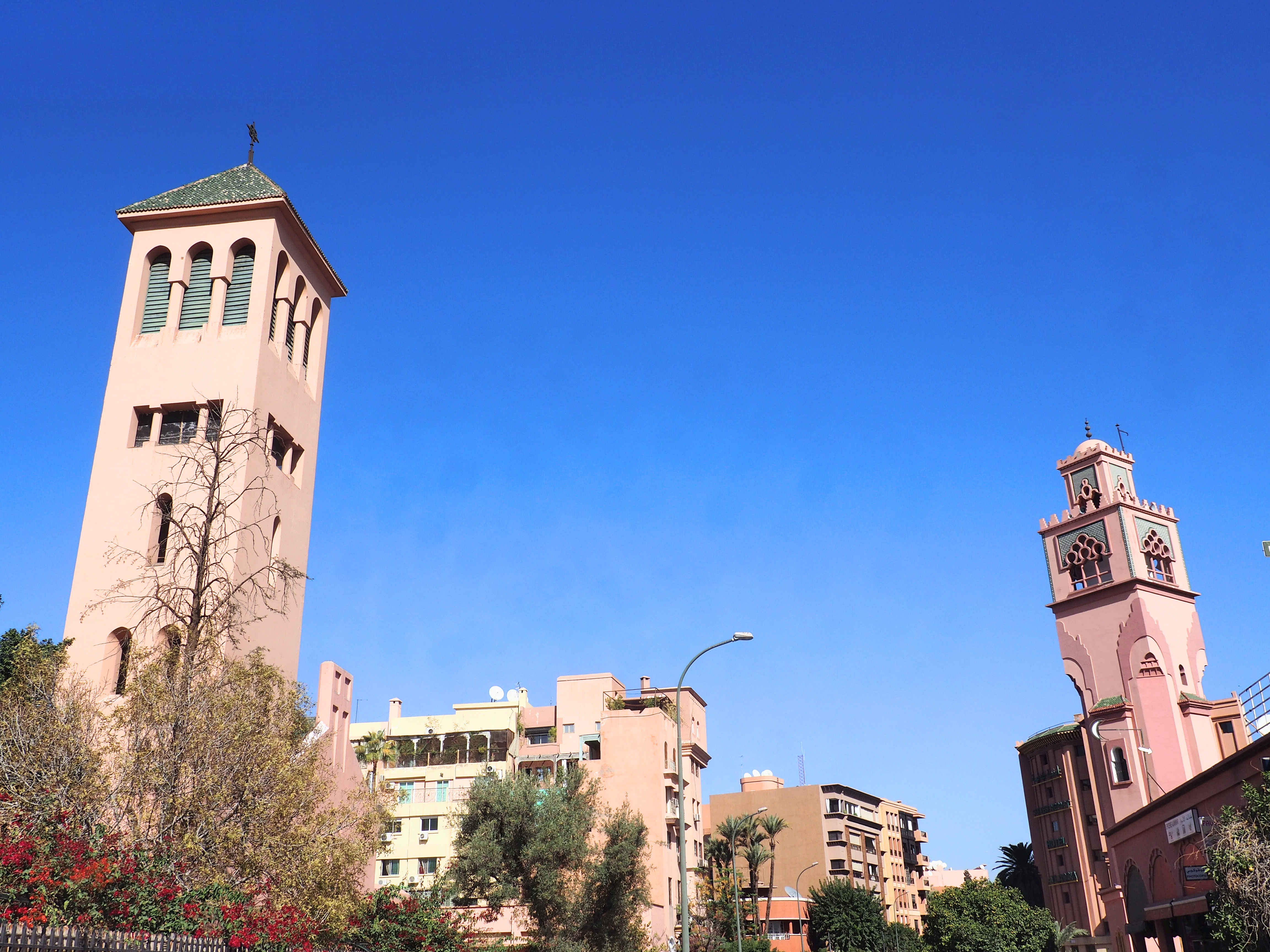
Marrakech can roughly be divided into two parts: the old Medina within the medieval city ramparts, and the Ville Nouvelle: the modern part of town.
When people from France moved to Marrakech in colonial times, they settled outside the Old Medina’s walls in the area now known as the Ville Nouvelle. The Ville Nouvelle has beautifully incorporated the old building style with the 19th-century French architecture. But if you are visiting Marrakech for the first time and only got a couple of days, do not bother going. What is worth a visit in the VIlle Novuvelle is the Jardin Majorelle and the recently opened Yves Saint Laurent museum. The gardens are a real pretty sight and the museum great for couture fans.
The Old Medina
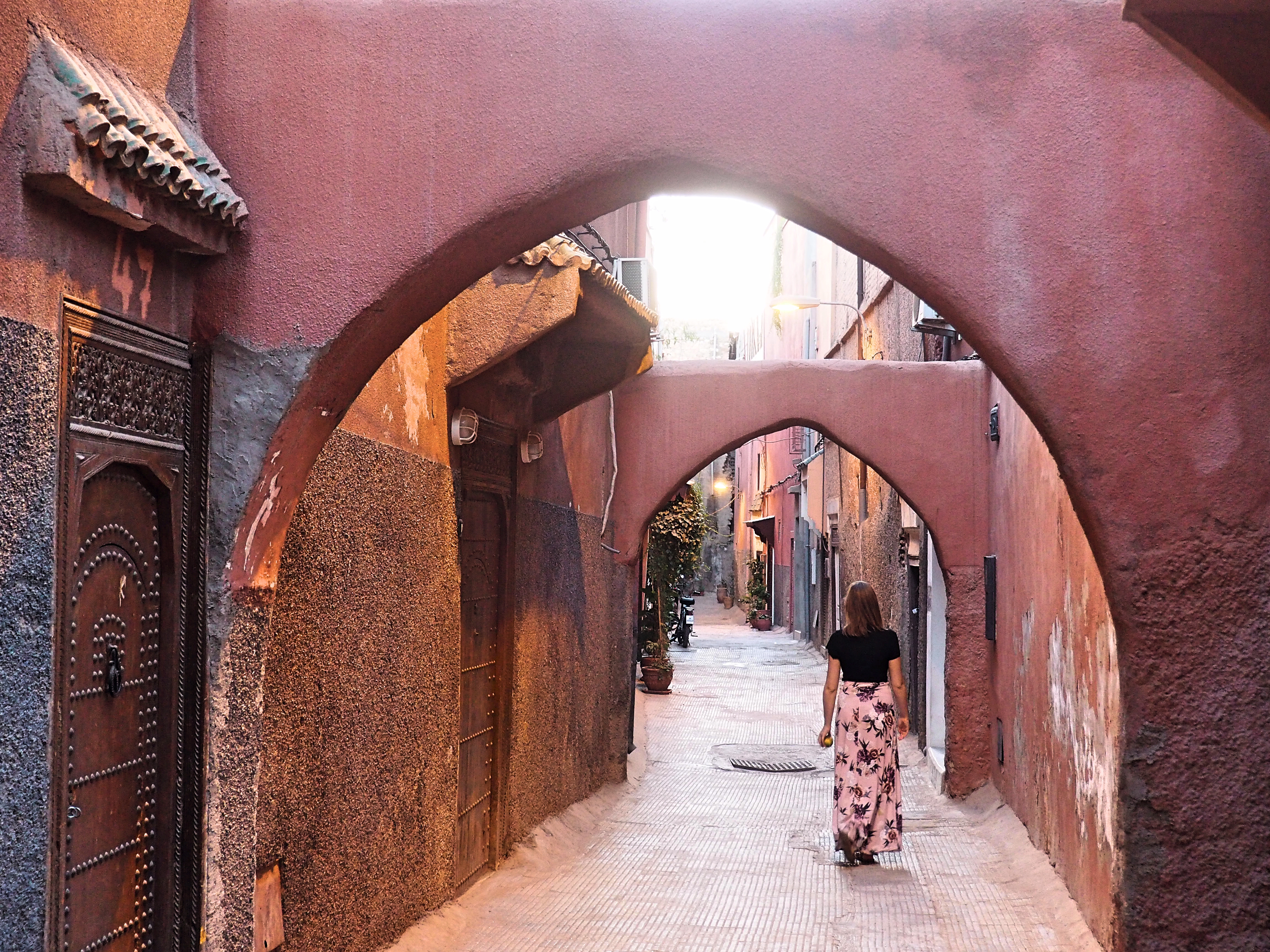
Surrounded by centuries-old sandstone-walls the Old Medina is both the heart and the most interesting place in Marrakech. The historic center of the city has been plagued by wars, raids, and fires throughout the ages but has stood its ground fiercely. Its one of the only places in the world where the pace of style of life has changed little in over a thousand years. The old Medina is a true labyrinth of alleyways criss-crossing between big Riads (family-houses) with little to no windows. But the small creaky wooden doors hide the most eccentric and lavish palaces you have ever set foot in. The good thing for us? Most Riads have now been turned into homestay hotels. Staying in these often (very) luxurious and always authentic and charming guesthouses will ensure that you are truly immersed in the Marrakech-lifestyle while being within walking distance from most important sights.
Djemaa El-Fna
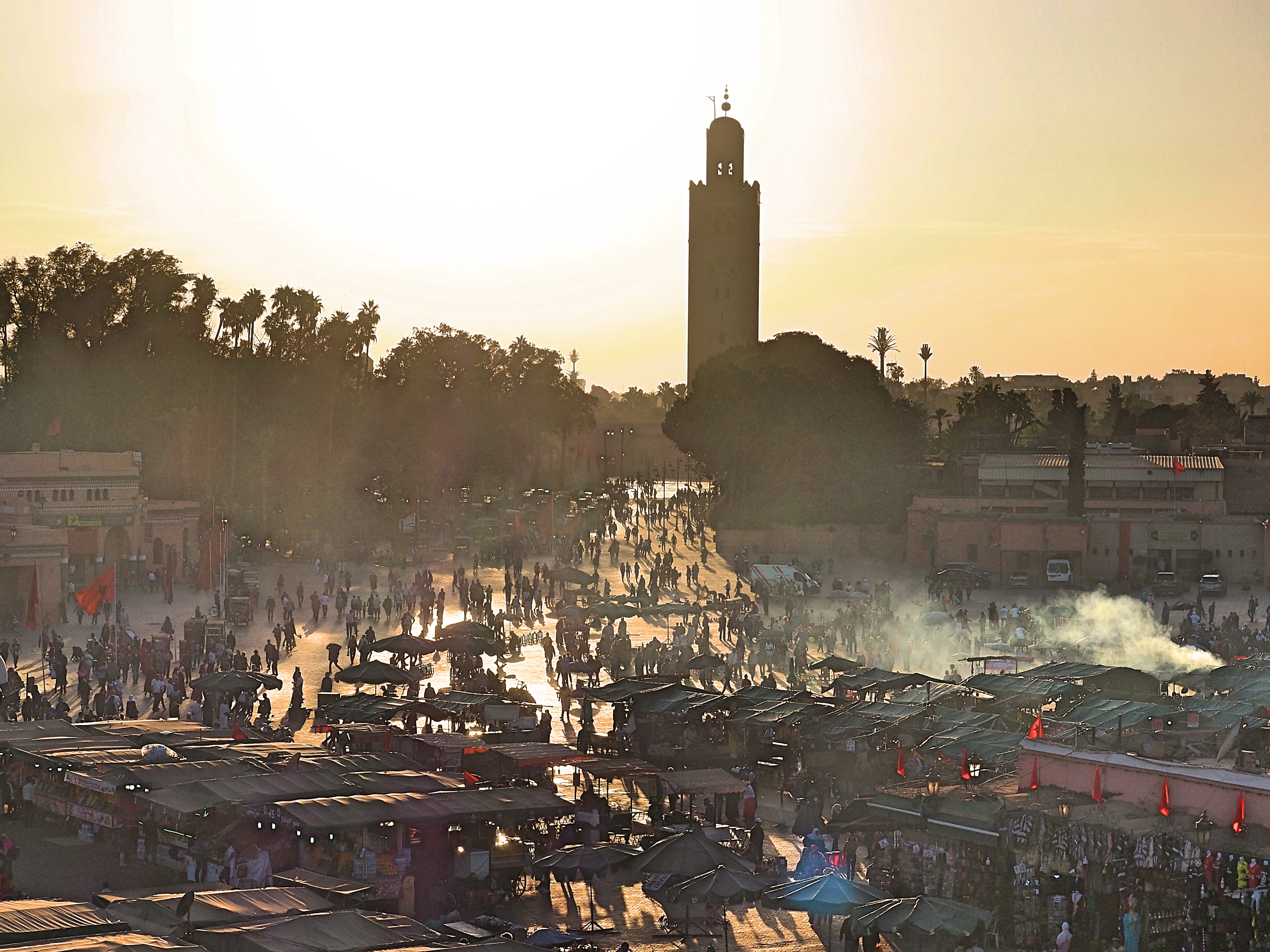
All little alleyways in the old Medina eventually find their way to the big square that is called Djemaa El-Fna. its name means ‘gathering of the dead’ which references to the public hangings that took place here centuries ago. Apart from these executions, little has changed. During the day the streets are filled with snake-charmers and monkey-artists who are replaced by storytellers and musicians when the night falls. When the sun starts to set, dozens of little street stalls pop up serving delicious fresh street food.. make sure to agree on a price beforehand though! The most expensive meal I had in Morocco was in one of the little stalls, right here at the square.
The square is so different during the day compared to in the evening that it is really worth visiting at both times. For a great view (and great photos) overlooking the square and the Koutoubia Mosque try one of the rooftop restaurants surrounding the square.
Koutoubia Mosque
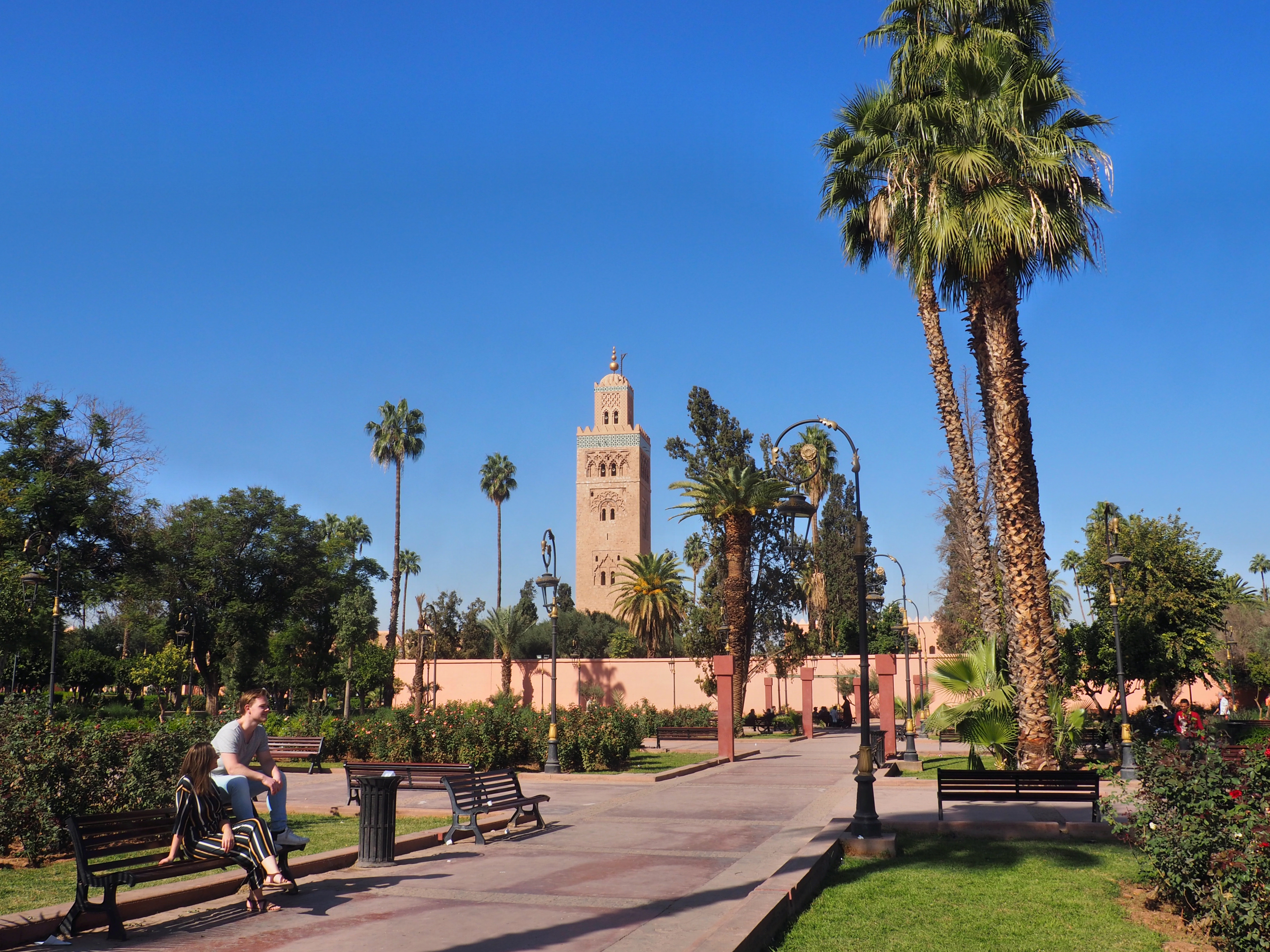
The big green and white mosque at the far end of the square can be seen from every side of the city due to a municipal law that forbids other development to be taller than the minaret. It can only be visited by Muslims but it makes for a good walk around the building (there is a small park behind the mosque). The green color symbolizes life and nature and was supposedly Mohammed’s favorite color – it is the most important color in Islam-religion and can be found in mosques throughout the country.
Souqs
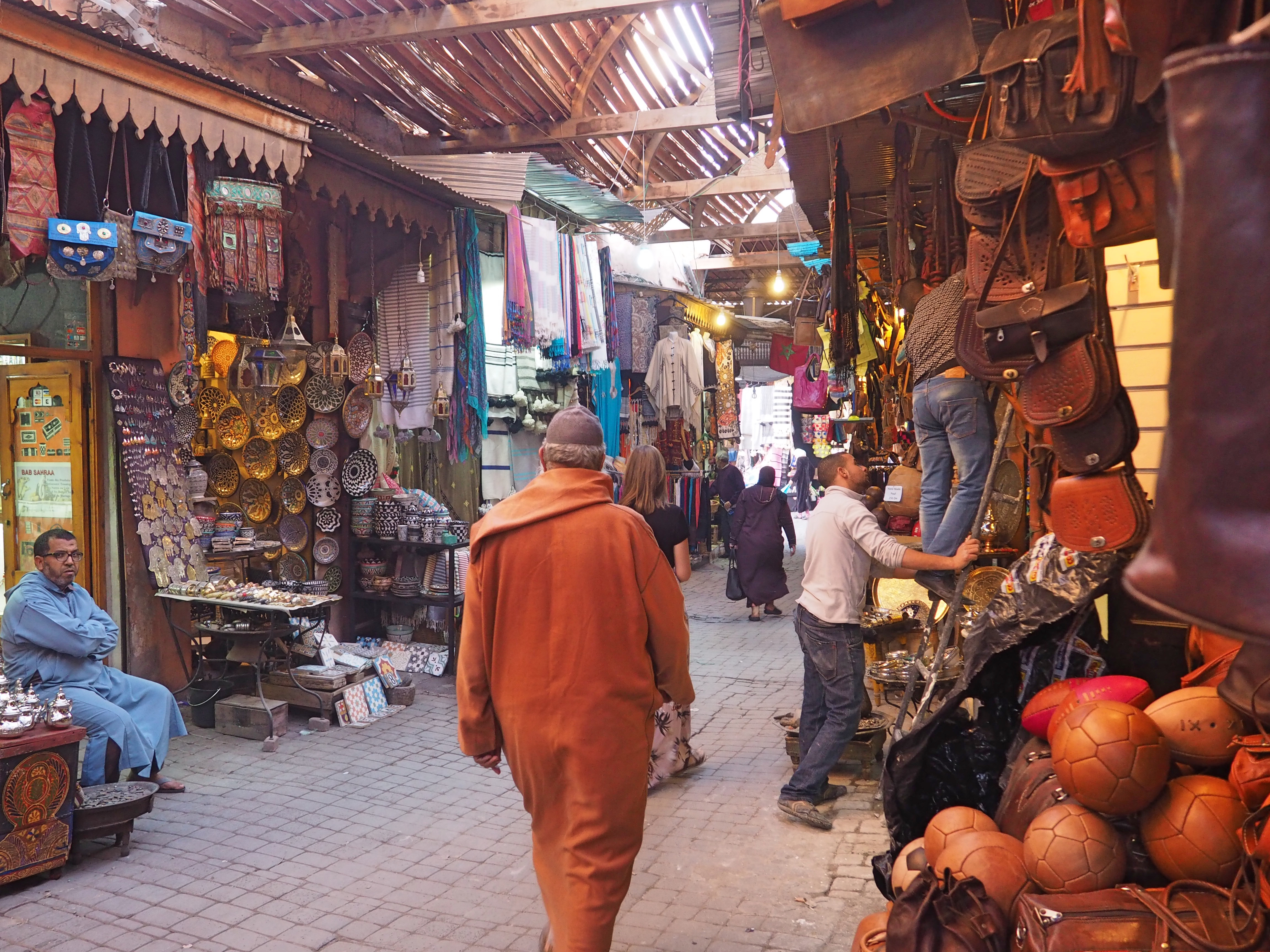
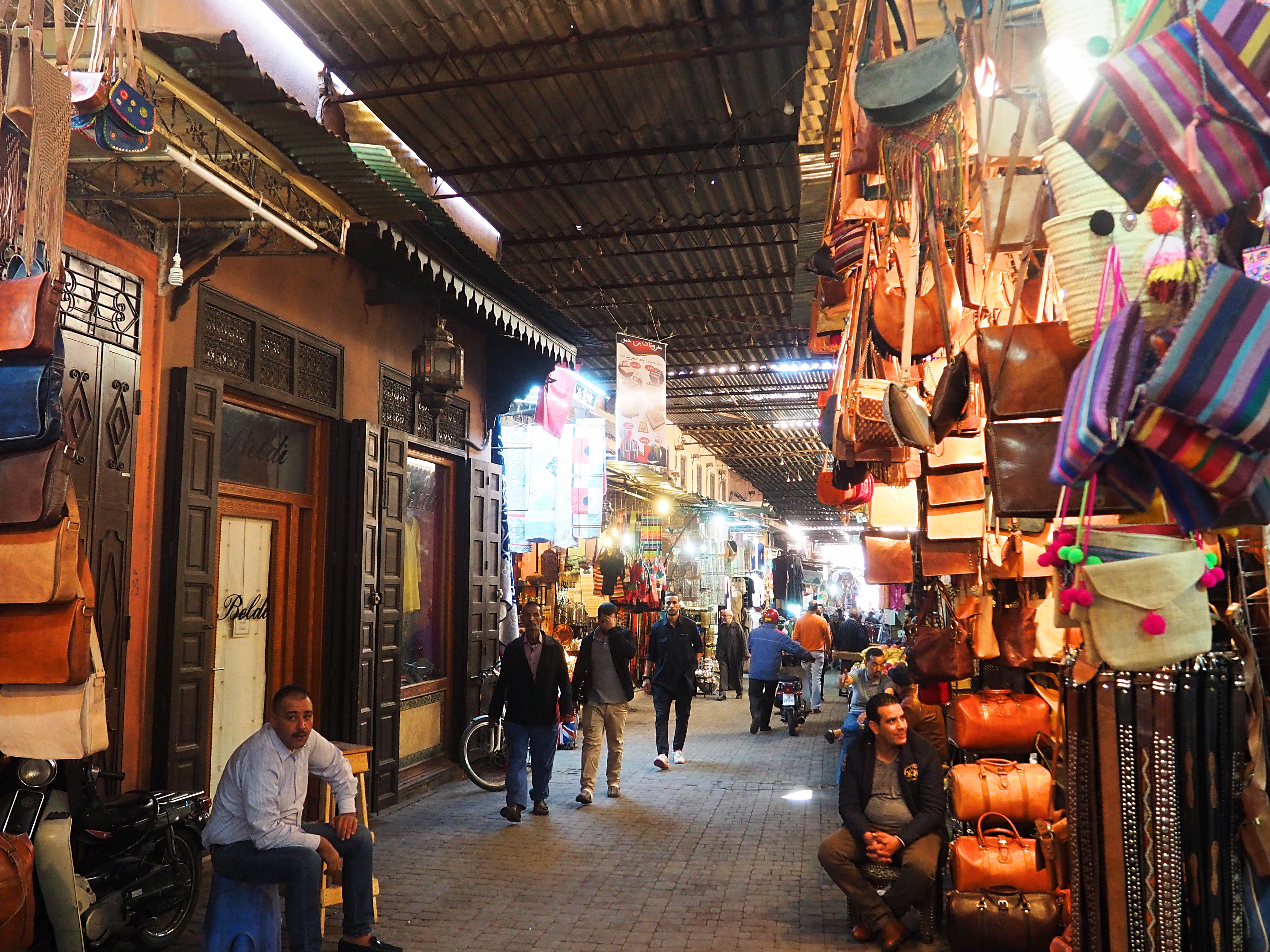
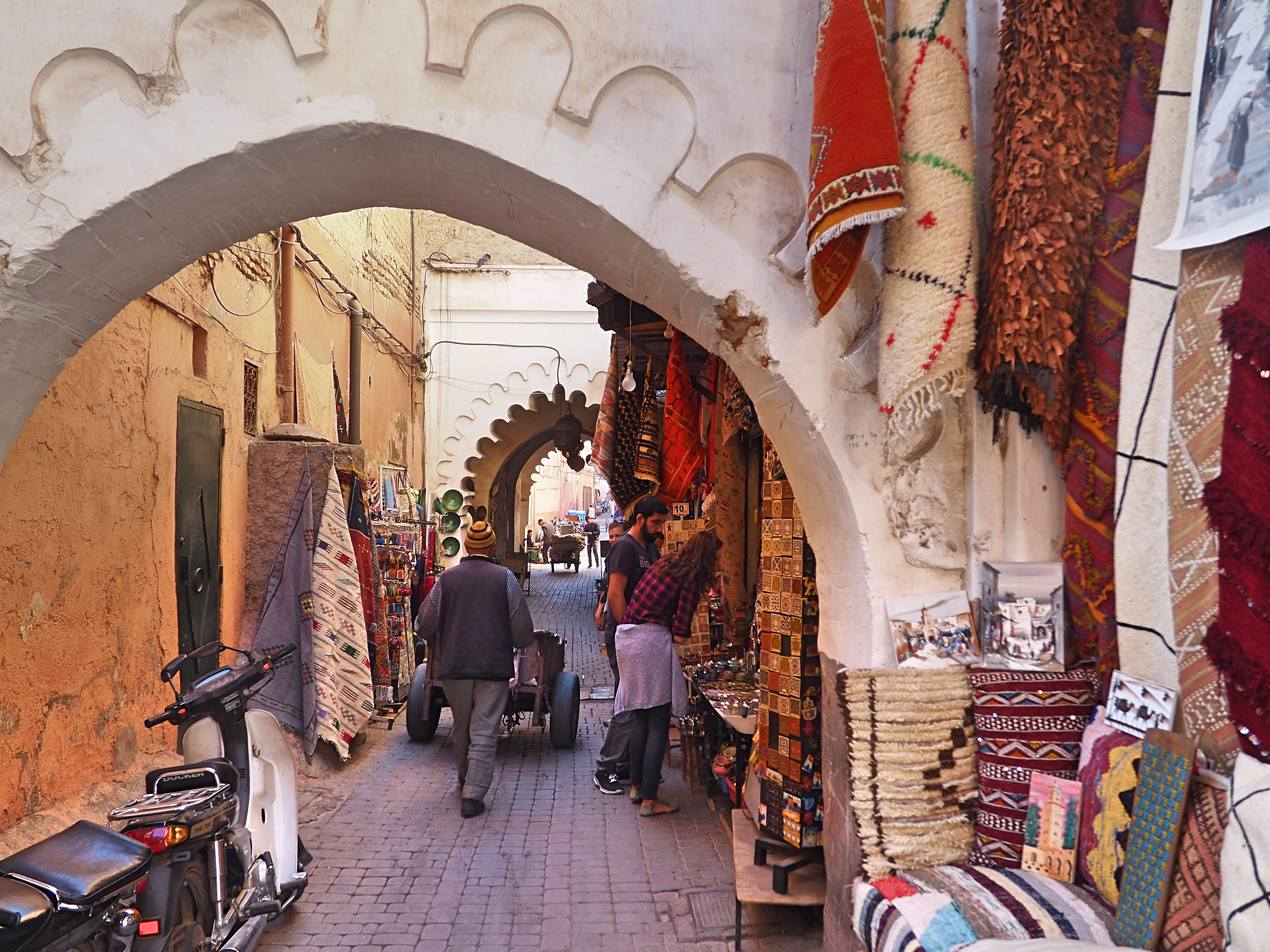
Stretching over a large area to the East of Djemaa El-Fna the souqs is the name given to the narrow shopping-streets filled with barters selling their wares to locals and tourists alike. One shop is a ‘souq’ and you can expect souqs selling everything from fresh spices, meats, and vegetables to clothing and pottery. Hugely popular are also the metal lanterns and lights and even though you may not get the best price here you will get the most extensive selection. For ceramic (and pottery) the best wares are transported from Fez – if you still plan on visiting you’re better off buying over there as the prices tend to be fairer. Be prepared to get lost here as the streets all look alike and bear no street names to make orientation easier. To add to the difficulty: to block out the (during the summer gruesome) sun most streets are covered with wooden panels making it nearly impossible for digital mapmakers to properly map out the area – yeah Google Maps is pretty inaccurate here.
Bahia Palace
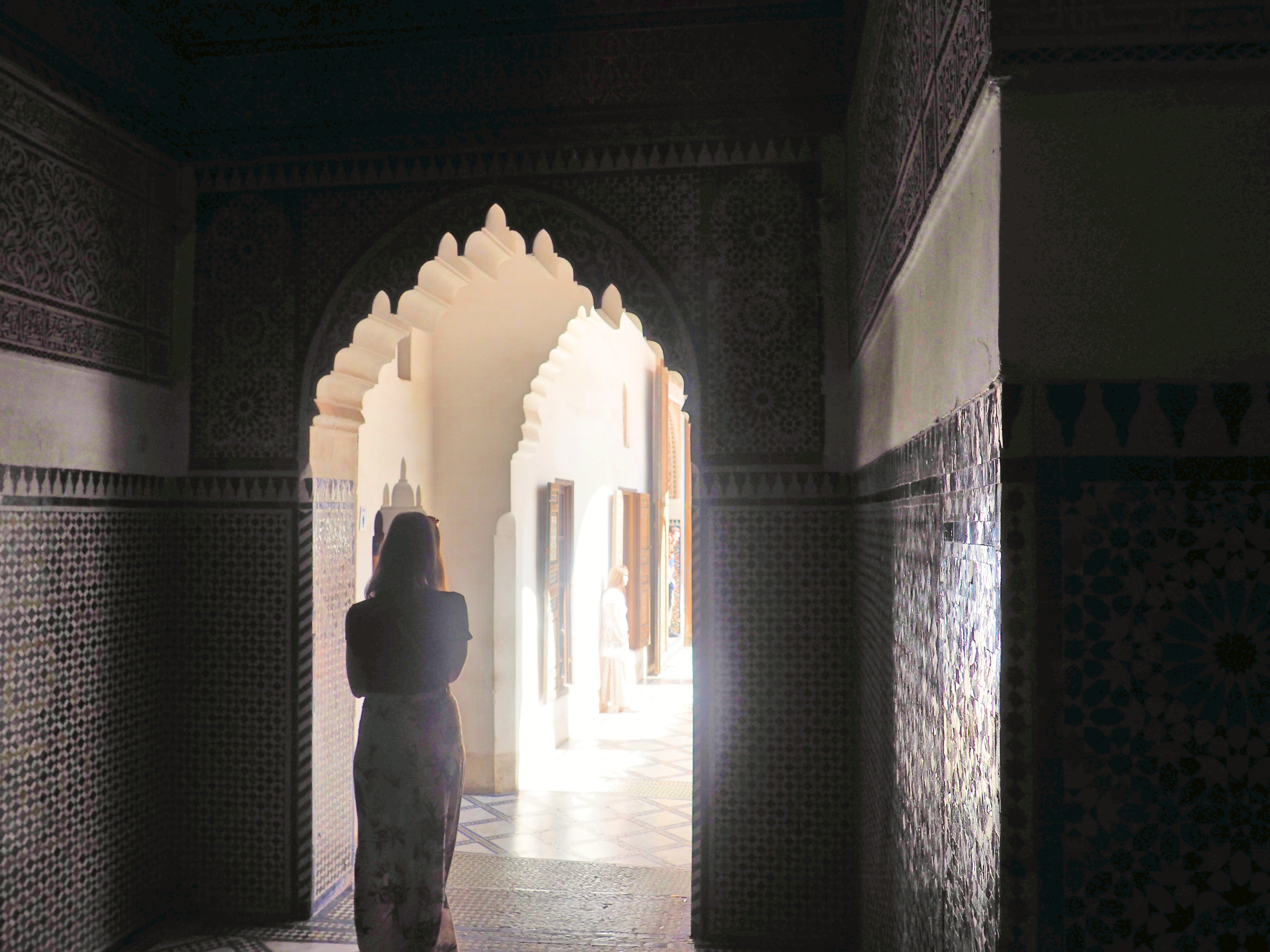
A fifteen-minute walk south of the square, next to the less interesting El Badi Palace lays the Bahia Palace, one of the best-preserved palaces in the city. For its entrance fee of only 10 MAD you really can’t go wrong. The Bahia Palace shines with its intricate detailed mosaic and woodcarvings. The ceilings and floors are beautiful and it is set in a tranquil green garden filled with fig palms and orange trees. Do not plan on staying here all day – you have probably seen the whole place in about an hour.
Le Jardin Secret
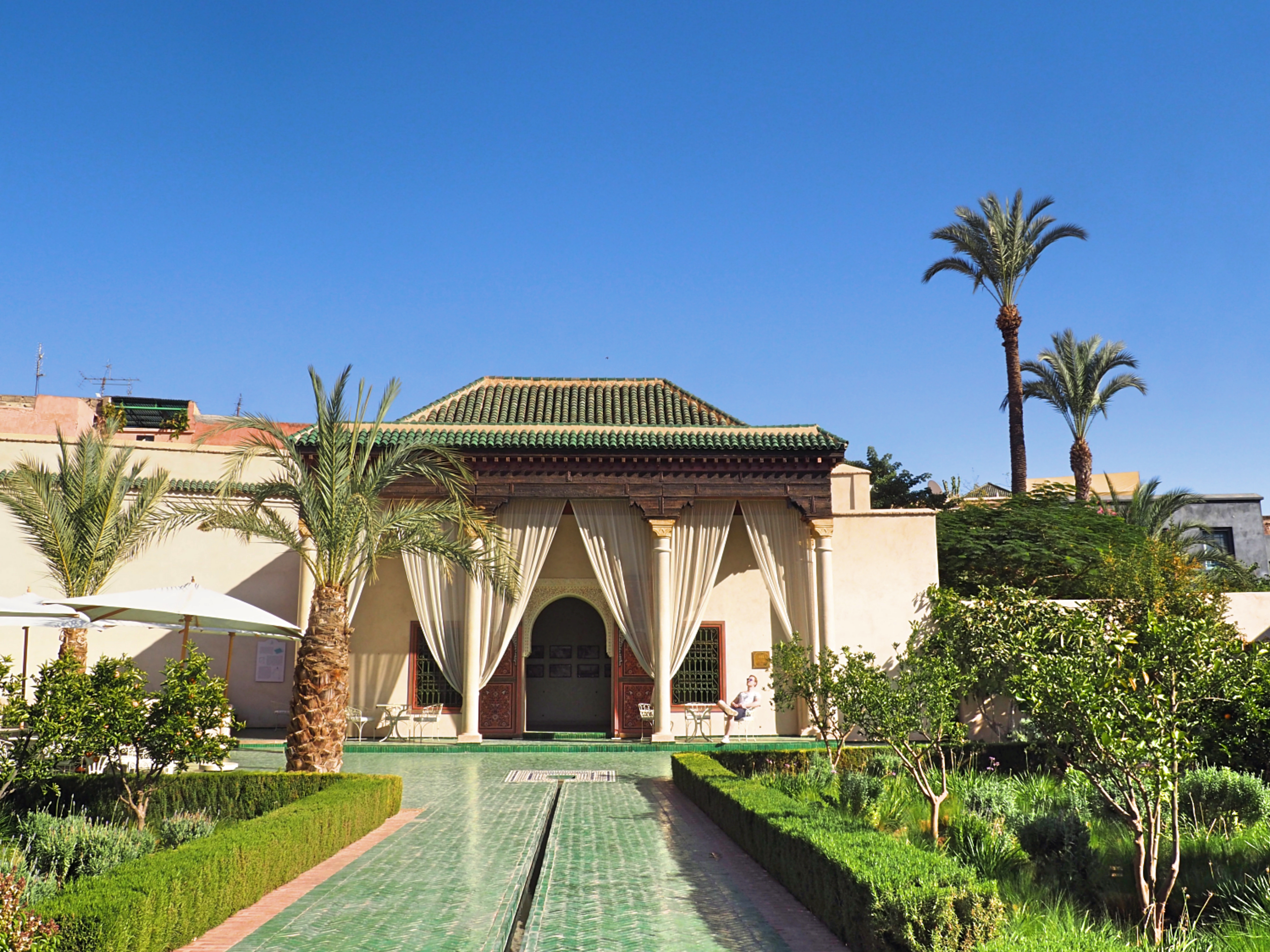
In the middle of the souqs is Le Jardin Secret, a privately run garden that has been taken care of in the most beautiful way possible. At 50 MAD it is slightly over-priced but the garden is a welcome escape from the chaos surrounding its thick walls. It is the biggest courtyard-garden in Marrakech and you’d be surprised that such a sizable green oasis is carefully hidden in the middle of the Medina! They serve lunch but considering the prices there are better choices nearby.
Tour-tip: Marrakech Green Wheels
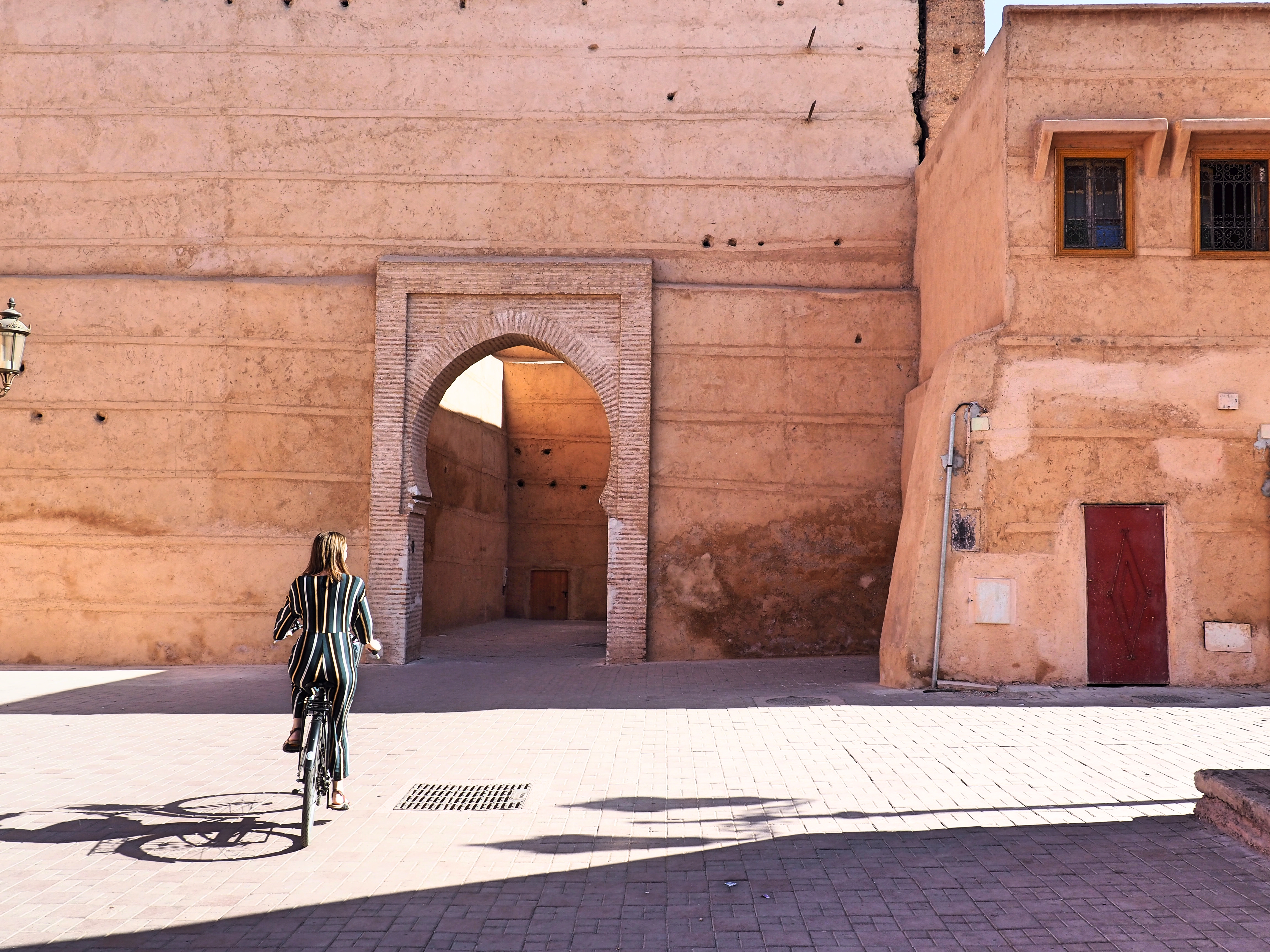
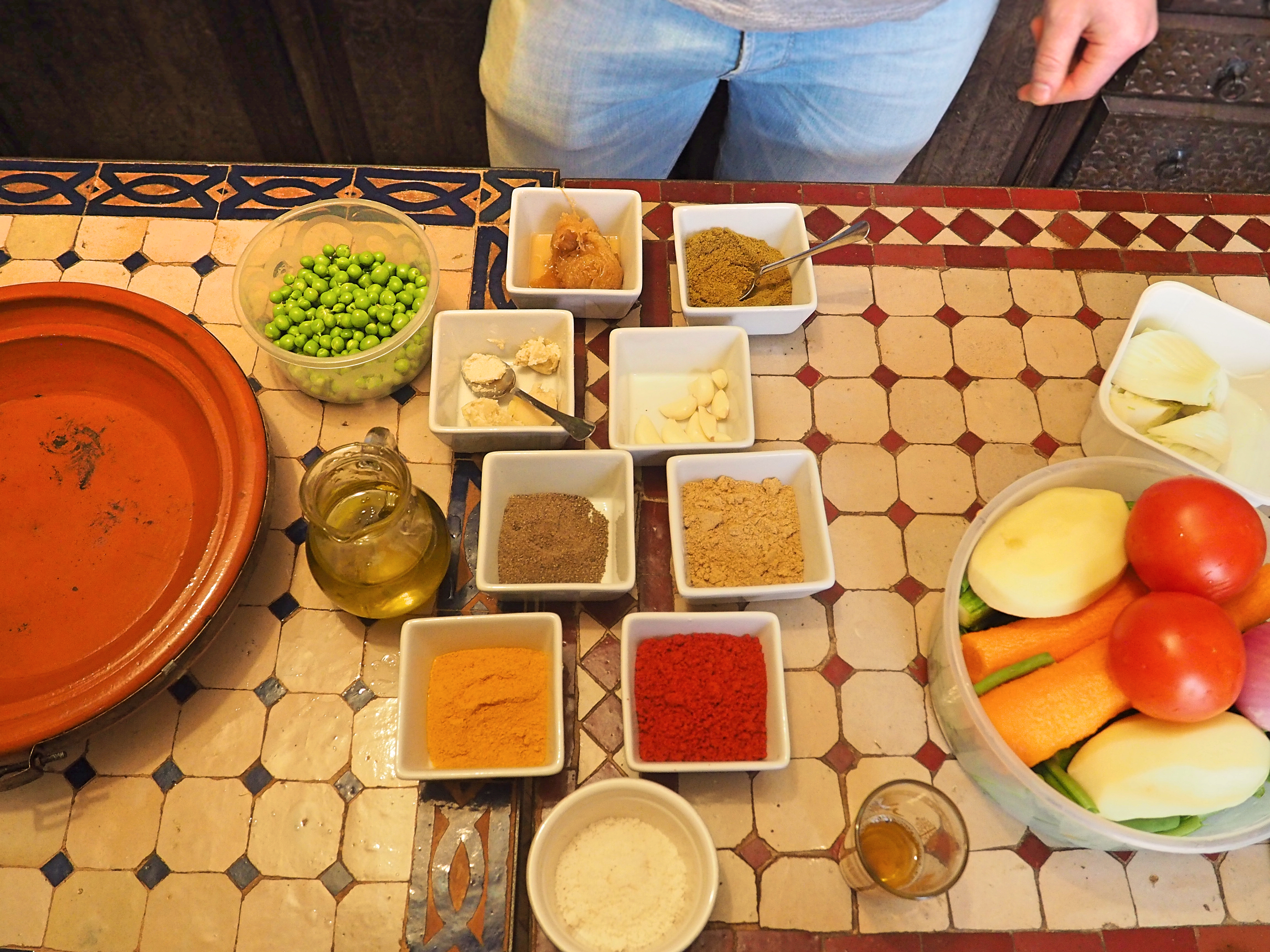
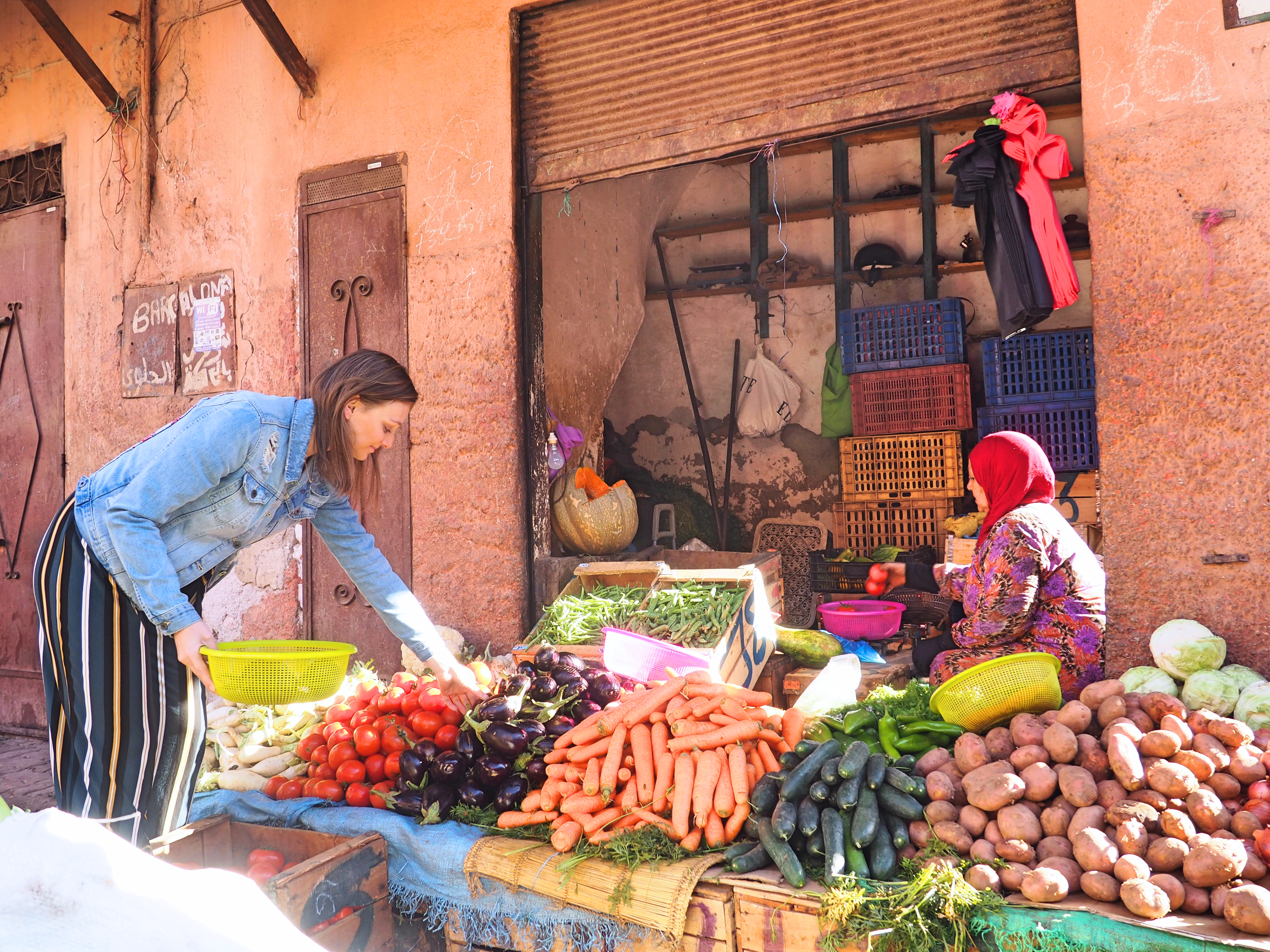
There are many ways to explore the city and a great way is a city tour. On offer are walking tours, cycling tours and even bus-tours. Do not take the bus though, the city is simply not fit to go around like this, besides.. is this really the kind of tourist you wanna be? Right. I thought not.
Another premium activity in Marrakech is cooking and sampling the local cuisine by taking a cookery course. But if limited in time.. what to choose? What tops both a city tour and a cooking tour? Right, a tour that combines the two: meet Marrakech Green Wheels.
On our first day in town we booked a culinary tour with Marrakech Green Wheels are were not disappointed. The tour starts with a visit to a local market to buy all meats, vegetables, and spices needed to cook traditional Moroccan food. You then go to a traditional Moroccan house where you will get a cooking lesson and prepare multiple dishes from the local cuisine. While the food simmers in a Tajine you head out by bicycle with a private guide to explore the city. After the trip (to both the Old Medina and the Ville Nouvelle), you return to the Riad where you eat the food you prepared in the morning.
We sat around a big table and ate the food we prepared, along with the cook and our guides for the day. The real learning about the Moroccan culture happend during extended talks and discussions during this meal.. all while eating delicious foods! The combination of exploring the city, getting to know its history and doing a cooking course at the same time is just dead smart, and probably the only of its kind in Marrakech. Oh, did I mention Marrakech Green Wheels focuses on responsible and sustainable tourism? That right – not only are you delving as deeply as possible in Marrakech culture in the fastest way possible – you are also supporting the local community while doing it.
– Around Marrakech –
Not only is Marrakech an interesting place to visit but there are several interesting sights in the close vicinity that make for excellent day-trips. 150KM north-east of the city are the Ouzoud Waterfalls, the tallest falls in the country. Except during summer when water is scarce, a dip in one of its pools is a nice way to cool down and clean off the desert dust. Less impressive but quieter and closer to town is the Ourika Valley at around 70KM to the South-East.
Marrakech is also used as a base to visit the Atlas Mountains, Ait Benhaddou, and the Sahara Desert, but if you got the time I highly recommend visiting these on a multiple-day tour (check out my article on a booking a desert tour) as the sights are just to far away from Marrakech to properly be enjoyed on a day-trip.
– Eating & Sleeping –
Eating
Marrakech is a haven for good food. Expect heavy use of spice and strong flavors. I am still going to write a food-guide for Morocco later on so I will not go in too much detail here but what is a city-guide without a few recommendations?
GO: Le Jardin is perfect for lunch. Hugely popular with tourists, but rightfully so. Good food in a nice green leafy oasis. Try the sardines and the avocado-shakes. Good food, prices are a bit steep but not rudely so. Jardin Majorelle (Rue Riad Zitoune) shares its name with the Yves Saint Laurent gardens in Nouvelle Ville but is, in reality, a great little eatery in the old Medina. Try it for breakfast or lunch, although they serve dinner too. Nice charming place and good value for money. My top recommendation for Dinner is Restaurant Jama. Tucked away in the Rue Riad Zitoune (at your right when walking from Djemaa El-Fna after about 10 minutes) is this beautiful little restaurant. Dinner is served in an atmospheric little courtyard garden, the food is great and it is just incredible value-for-money. They serve off-the-menu beer on request.
DON’T GO: my biggest let-down in my visit to Marrakech was Terrasse des Epices. Although the rooftop-terrace looks stunning and if you manage to arrange a table overlooking the square, the atmosphere is hard to beat, this place is just not worth the money spend. The food is bland and prices are sky-high.
Sleeping
The best place to spend your nights in Marrakech is in a Riad. These old family-houses are mostly renovated and transformed into boutique-hotel style guesthouses. Many are as beautiful as most palaces around town and since they often do not offer more than 5 rooms the service and personal approach is unbeatable. The problem is to find a good Riad – as there are over 3000 in Marrakech….
Riad Marhbabikoum We stayed at Riad Marhbabikoum, which means ‘welcome’ in Arabic, and we felt most welcome indeed! The rooms are beautiful, the rooftop-terrace a nice tranquil retreat from the noisy city and the staff is just impeccable. It is run by Khalil and Véronique but daily management is in the hands of Mohammed who will greet you at the doorstep with fresh mint-tea on arrival. The Riad is one of few Riads that hold the ‘Green Key’ sustainability label in Marrakech, meaning choosing for Marhbabikoum is choosing to support sustainable tourism. Even though the Riad is run in a responsible and sustainable way this does not hamper the level of comfort the little boutique guesthouse provides. A double costs €75,00 ($90.00) a night incl. breakfast.
If you are looking for budget-accommodation I recommend staying at Kaktus Hostel. Situated closely to Djemaa El Fna with a big rooftop terrace and offering basic dorms starting at 70 MAD (€6,00) incl. breakfast.
